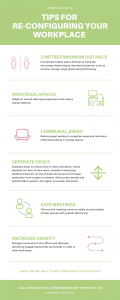Working from home or at the office is great, but it’s difficult without certain gadgets. A light for your workspace and charging points will make you more comfortable while working on these late nights! A chair that supports back are also essential so please don’t forget them when buying new furniture in order to get rid of chronic pain caused by improper posture all day long.
Here we have a list of cool office gadgets in 2022 that will make your office work more comfortable and effective:
Wireless Charging Mouse Pad
Now, this is a well-thought-out device- a wireless charging mouse pad. The designers have worked hard to create a product that meets all of the end-users needs. The charging area is increased because of the three coil method. The dual charging port has been included so that users can charge their devices in the most convenient locations. This device eliminates the frustrations associated with a shortage of workspace and comes in various appealing colours.
Charging Docks
One of the handiest tools you may have on your desk is an all-in-one charging station. Keeping all of our electronics charged is undoubtedly one of the most time-consuming activities we have. As a result, having a charging port that can simultaneously charge all of your precious devices is a godsend.
Monitor Lights
When it comes to creating the ideal workstation layout, we consider a few factors. An excellent monitor paired with a wireless mouse and keyboard, a charging dock to keep our expensive electronics charged, and perhaps an ergonomic chair is thrown in for good measure! But how frequently do we consider the importance of good lighting? Our working environments aren’t as well-illuminated as we may believe. We often take lighting solutions for granted when we really shouldn’t. Inadequate illumination puts a burden on our eyes and can be rather irritating to work in.

